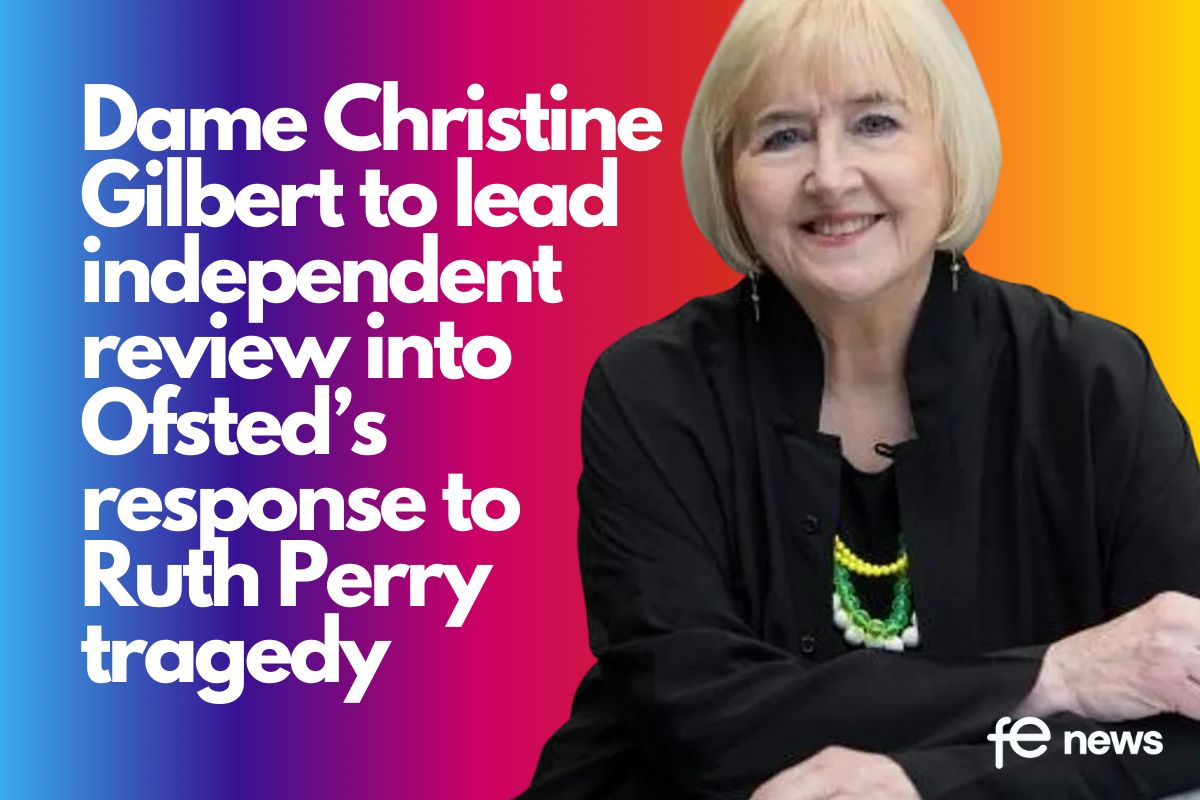Safeguarding and Restorative Practice in the FE and Training sector

My personal interest in the value of restorative practice started when, after a protracted and extremely thorough preparatory process, I found myself sitting with my husband, across the table from the young man who had murdered my 38-year-old brother-in-law, seven years previously, in a frenzied, drug induced and unprovoked attack; leaving a wife without a loving husband and two young boys without their devoted father.
This is not about the detail of that particular journey; suffice to say it was at times a deeply challenging but ultimately a profoundly healing experience.
One unexpected outcome was to find myself reflecting on how I could apply the learning I had gained in managing conflict resolution in an educational context.
Applying the principles of restorative practice at work
In exploring the possibilities of applying the principles of restorative practice at work, some simple online research brought up examples of successful practice in America and Australia and then, closer to home, in Bristol and Wakefield.
This readily available information also highlighted the challenges of establishing a ‘restorative organisation’ and the publication of a borough wide ‘restorative strategy’ from our Local Authority at around the same time was extremely helpful.
Whilst there are some obvious shared characteristics, it is important to note the distinction between restorative justice, specifically designed for the criminal justice system, and restorative practice as a social science, which can be used to repair damaged relationships where no criminal activity has occurred.
Restorative interventions focus on behaviour rather than an individual’s character and lead to healthier interpersonal relations.
Effectively implemented, restorative practice in education is a powerful tool
I became convinced of the benefits of embedding restorative practice within our Positive Behaviour Policy and our safeguarding toolkit, after much further reading and learning, and to that end we developed a restorative practice framework including a staff development programme and awareness raising sessions for learners. The initial staff development training was a three-day course for a core team of 30 pastoral and safeguarding practitioners which, whilst offering good value for money, required a real commitment from college to embedding this practice across the piece. Further staff development sessions were delivered through a ‘train the trainer’ dissemination programme which acknowledged the different needs between staffing groups.
Restorative practice in education can increase social and cultural capital, repair harm, restore relationships and reduce negative behaviours; so, effectively implemented, it is clearly a powerful tool which can make a significant contribution to personal development and behaviours and attitudes of our learners.
Restorative interventions can benefit all involved and can encourage and strengthen important qualities including:
- personal reflection and accountability;
- empathy and mindful listening;
- understanding and forgiveness.
Given that, in the neuroscience of teenage development, it takes seven minutes of empathic interaction to create a new pathway in the brain, this may well be a key factor in why effective restorative interventions can be so successful.
Certainly, staff development needs to be meaningful and comprehensive, with opportunities to share practice and develop confidence and competence. Learners also need to fully understand the process, why it is being offered and what can be gained.
One basic tenet of restorative practice is that both or all parties agree to engage in the process.
In our practice, we have found three typical responses:
- complete refusal to engage;
- agreement to engage but without full commitment;
- agreement and clear willingness to engage.
Simply translated:
- I am not sorry;
- I am prepared to say I’m sorry;
- I am and feel sorry. I don’t want to repair;
- I am prepared to say I want to repair;
- I want to repair.
Those decisions, whatever they may be, should not be made without the process being fully and carefully explained. This would include the preparatory work with each person involved, agreement about who will speak first and even where attendees will be sitting and who enters the room in what order.
There should be no surprises in that regard and expectations should be very clearly set out. The focus should be on listening to the impact of actions on others and reaching awareness of what needs to be done to repair harm.
Using restorative practice as a safeguarding tool
In terms of using restorative practice as a safeguarding tool, it allows early and impactful intervention to ‘mend’ damage done between people and establish a positive way forward. We have used this methodology between learners and parents also, obviously with their full agreement, between staff and learners and between staff.
For DSLs and safeguarding practitioners, this approach can save significant resource regarding dealing with repeated incidents such as bullying, harassment or negative attitudes. Acting early with restorative intervention can de-escalate situations and prevent further occurrence.
It is an inclusive approach, designed to keep the college community working together, rather than isolating or rejecting the wrongdoer which can exacerbate negative behaviours.
Another important factor to consider is ensuring restorative practice is embedded within a positive behaviour policy; it is not an ‘either/or’ option. Restorative practice runs alongside disciplinary sanctions and they are not mutually exclusive; where a sanction is required, that can be applied whether restorative intervention takes place or not.
The restorative element can considerably reduce the chances of repeated offending behaviour.
We have found that there are key aspects which underpin the success of an organisational restorative approach:
- ‘buy-in’ or support from the whole college community;
- a focus and belief as inclusivity as a core value;
- fully trained practitioners.
A restorative approach can be offered to individuals, between learner and learner, to whole learner groups (check out ‘restorative circles’) between learners and staff, and between staff members. Ironically, on the rare occasions when one party has refused to engage when offered a restorative intervention, in our experience it has been the staff member rather than the learners.
Brief successful case studies from my own practice include:
- a tutor and a group of six learners who had reached an impasse with both sides feeling aggrieved;
- a learner group of five and one learner who was refusing to attend as she felt targeted by them;
- two learners who had previously been friends but whose mothers had got into conflict, leading to them acting out that conflict between themselves;
- a tutor and a learner who had been verbally abusive after being challenged for lateness.
In all these cases, and many, many more, relationships were healed, learning resumed, suspensions avoided and no repeat behaviours reported. Overall, at the end of our first year, we had much higher level of coaching and restorative interventions and significantly fewer more serious sanctions including written and final written warnings.
Sometimes, no matter how hard we try, we do not succeed in having the desired impact on a young person; maybe we don’t find the right ‘emotional available adult’ who can reach that inner core, maybe we push further and further away rather than being fully ‘inclusive’ and working closely with, rather than implementing distance.
Sometimes the risk of harm is too great to sustain inclusion, and exclusion is what is required to protect others.
Thinking back to the young man who killed my brother-in-law; a few facts: he was 17 at the time, 24 when he was released from prison. He had previous chaotic and painful lived experience and presented negative and challenging behaviours at school. He was put into detention on numerous occasions, suspended a number of times, spent extensive periods in ‘isolation’ and was eventually permanently excluded.
Remarkably, and without intention, in that original restorative justice meeting with my husband, surrounded by probation and social workers, we briefly became the emotional available adult to that young man in that moment, and his words as we left the room some three hours later were “I did this to you, but you have truly listened to me today. I want to get it right, I want to do that for you”.
Polly Harrow, Education and Training Association Associate, Assistant Principal and Designated Safeguarding Lead, Kirklees College, and Chair, NAMSS
Updated Safeguarding in FE and Training course and Prevent modules launched
The Education and Training Foundation (ETF) has launched its completely revised and updated Safeguarding in FE and Training course and refreshed Prevent duty awareness raising modules. Both have been developed in consultation with the profession, through the early stages of their development and in pilots.
The key updates for the Safeguarding in FE and Training course are:
- All guidance updated to be in alignment with KCSiE rev 2020 and the revisions in the Working Together to Safeguarding Children rev 2020/1.
- Stronger links between Safeguarding and our refreshed Prevent e-modules to help colleagues fully understand the links needed to engage with Prevent.
- A new section on digital safety, which has been built to be easy to understand, even if you are not IT literate.
It can be accessed via the ETF’s Course Booking System.
The Prevent duty awareness raising modules have also been updated to be in alignment with KCSiE rev 2020 and the revisions in the Working Together to Safeguarding Children rev 2020/1, and also feature stronger links to the Safeguarding in FE and Training course modules. Additionally, they include a selection of new case studies on topics that are up to date, including conspiracy theories and right-wing activities. They can be accessed via the ETF’s Foundation Online Learning site.
Both are divided into core information, additional reading, and activities. There are multiple choice questions at the end of each section. These must be completed to gain the final certificate. A minimum score of 70% must be achieved to pass each course.
The ETF recommends all staff and volunteers, whether they are directly working with learners or not, should all complete this training. This is because it has been developed to ensure everyone can identify concerns, receive an allegation or disclosure, and know what to do to ensure it is actioned – actions which are the responsibility of everyone in the sector.
The courses are funded by the Department for Education and are free for users. They are part of a suite of Safeguarding and Prevent support offered by the Education and Training Foundation which includes programmes on safeguarding specifically for Governors and Trustees, Safeguarding Leads, Safer Recruitment, and specialist safeguarding modules. A course on digital safeguarding for SMT is in development.












Responses